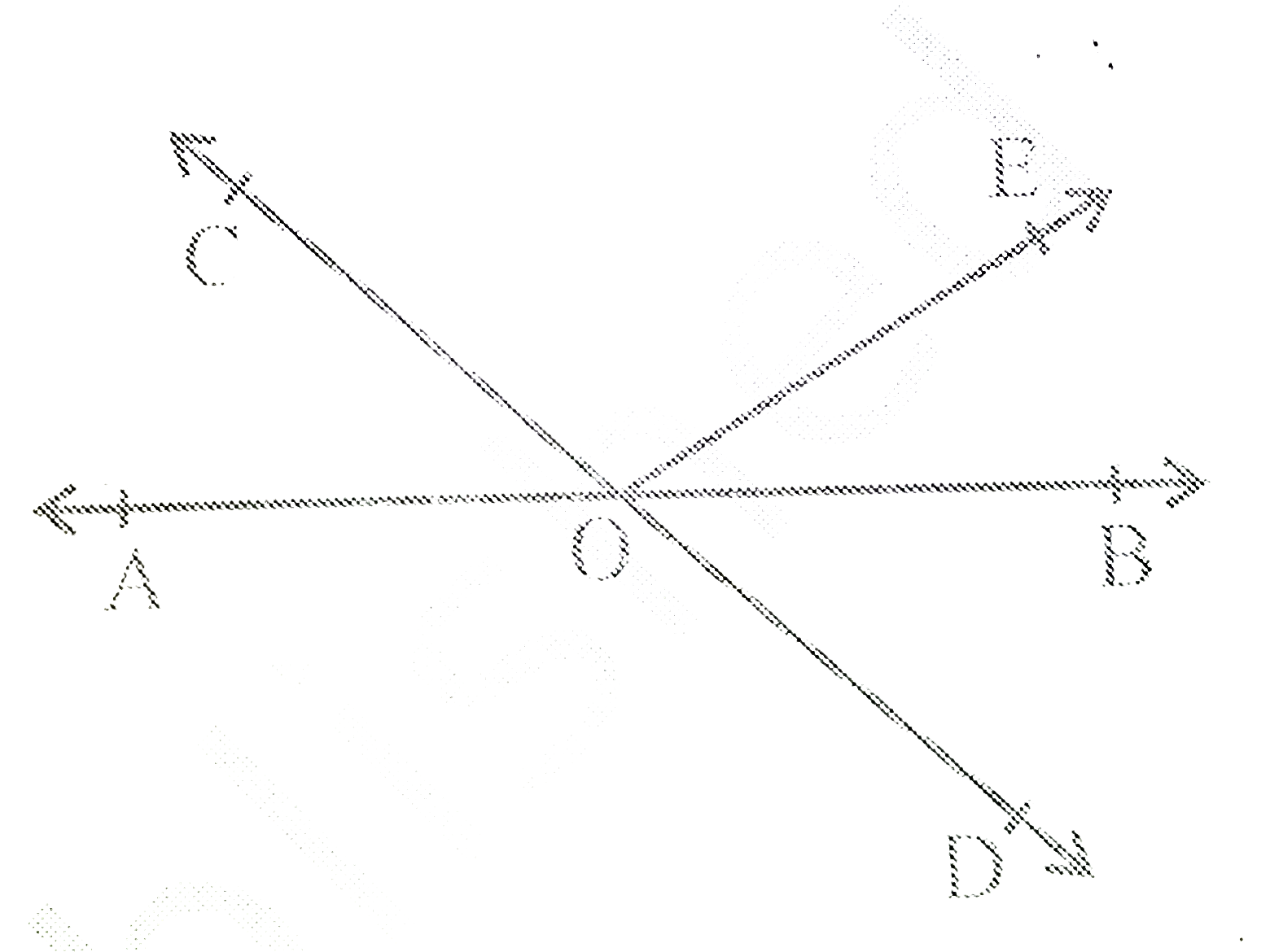In Fig. AB∣∣CD . If OA=3x−19, OB=x−4 , OC=x−3 and OD=4 , find x .
To solve the problem step-by-step, we will use the properties of trapeziums and the given lengths. Here’s the detailed solution:
Step 1: Understand the Problem
We are given a trapezium ABCD where AB∥CD. The lengths of segments are given as:
- OA=3x−19
- OB=x−4
- OC=x−3
- OD=4
Step 2: Use the Property of Trapezium
In a trapezium, the diagonals divide each other proportionally. Therefore, we can set up the proportion:
OAOC=ODOB
Step 3: Substitute the Given Values
Substituting the expressions for OA, OB, OC, and OD into the proportion gives us:
3x−19x−3=4x−4
Step 4: Cross-Multiply
Cross-multiplying to eliminate the fractions:
(3x−19)⋅(x−4)=4⋅(x−3)
Step 5: Expand Both Sides
Expanding both sides of the equation:
3x2−12x−19x+76=4x−12
This simplifies to:
3x2−31x+76=4x−12
Step 6: Rearrange the Equation
Bringing all terms to one side gives:
3x2−31x−4x+76+12=0
This simplifies to:
3x2−35x+88=0
Step 7: Factor the Quadratic Equation
Now we will factor the quadratic equation 3x2−35x+88=0. We can look for two numbers that multiply to 3⋅88=264 and add to −35. The numbers are −11 and −24.
Rewriting the middle term:
3x2−11x−24x+88=0
Grouping the terms:
(3x2−11x)+(−24x+88)=0
Factoring by grouping:
x(3x−11)−8(3x−11)=0
Factoring out the common term:
(3x−11)(x−8)=0
Step 8: Solve for x
Setting each factor to zero gives us:
1. 3x−11=0⇒x=113
2. x−8=0⇒x=8
Final Answer
Thus, the values of x are:
x=113andx=8
We are given a trapezium ABCD where AB∥CD. The lengths of segments are given as:
- OA=3x−19
- OB=x−4
- OC=x−3
- OD=4
In a trapezium, the diagonals divide each other proportionally. Therefore, we can set up the proportion:
OAOC=ODOB
Substituting the expressions for OA, OB, OC, and OD into the proportion gives us:
3x−19x−3=4x−4
Cross-multiplying to eliminate the fractions:
(3x−19)⋅(x−4)=4⋅(x−3)
Expanding both sides of the equation:
3x2−12x−19x+76=4x−12
This simplifies to:
3x2−31x+76=4x−12
Bringing all terms to one side gives:
3x2−31x−4x+76+12=0
This simplifies to:
3x2−35x+88=0
Now we will factor the quadratic equation 3x2−35x+88=0. We can look for two numbers that multiply to 3⋅88=264 and add to −35. The numbers are −11 and −24.
3x2−11x−24x+88=0
Grouping the terms:
(3x2−11x)+(−24x+88)=0
Factoring by grouping:
x(3x−11)−8(3x−11)=0
Factoring out the common term:
(3x−11)(x−8)=0
Setting each factor to zero gives us:
1. 3x−11=0⇒x=113
2. x−8=0⇒x=8
Thus, the values of x are:
x=113andx=8
Topper's Solved these Questions
Similar Questions
In a ABC , D and E are points on the sides AB and AC respectively such that DEBC If AD=8x−7, DB=5x−3, AE=4x−3 and EC=(3x−1) , find the value of x . .
View SolutionIn a ABC , D and E are points on the sides AB and AC respectively such that DE/BC If AD=4 , AE=8 , DB=x−4 , and EC=3x−19 , find x .
View SolutionIn Fig. 4.89, if EDC~EBA, ∠BEC=115o and ∠EDC=70o . Find ∠DEC, ∠DCE, ∠EAB, ∠AEB and ∠EBA . (FIGURE)
View SolutionIn Fig. 4.140, ∠ABC=90o and BD⊥AC . If AB=5.7cm , BD=3.8 cm and CD=5.4cm , find BC . (FIGURE)
View SolutionIn Figure, lines AB and CD intersect at O. If ∠AOC+ ∠BOE=700and ∠BOD=400, find ∠BOE and reflex ∠COE
View SolutionIn Fig. 6.13, lines AB and CD intersect at O. If ∠AOC +∠BOE=70∘and ∠BOD=40∘, find ∠BOE and reflex ∠COE.

View SolutionIn Figure, ∠AOB=90∘, AC=BC, OA=12 cm and OC=6.5cm. Find the area of △AOB.
View SolutionIn a ΔABC , ∠A=xo, ∠B=(3x−2)o, ∠C=yo . Also, ∠C−∠B=9o . Find the three angles.
View SolutionIn Fig. 4.170, ABCD is a trapezium in which AB∥DC and AB=2 DC . Determine the ratio of the areas of AOB and COD . (FIGURE)
View SolutionA point O inside a rectangle ABCD is joined to the vertices. Prove that the sum of the areas of a pair of opposite triangles so formed is equal to the sum of the other pair of triangles. Given: A rectangle ABCD and O is a point inside it. OA, OB, OC and OD have been joined. To Prove: ar (AOD)+ ar (BOC)= ar (AOB)+ ar(COD)
View Solution
